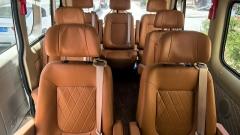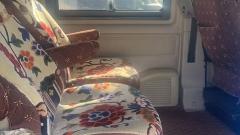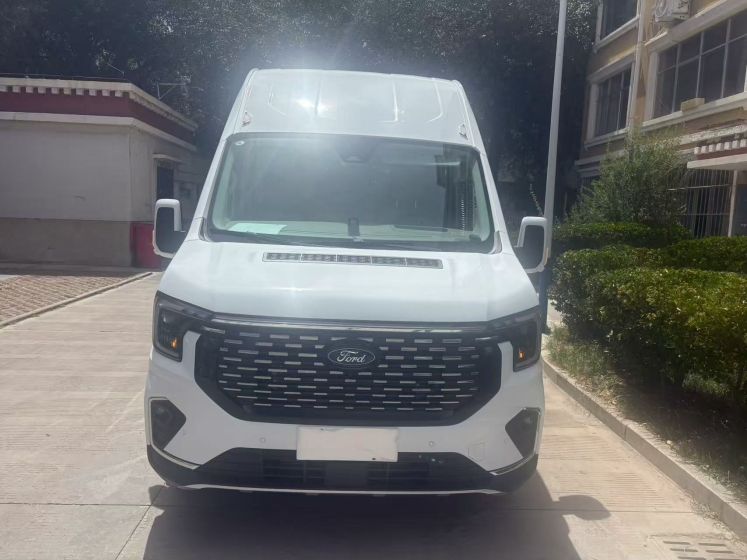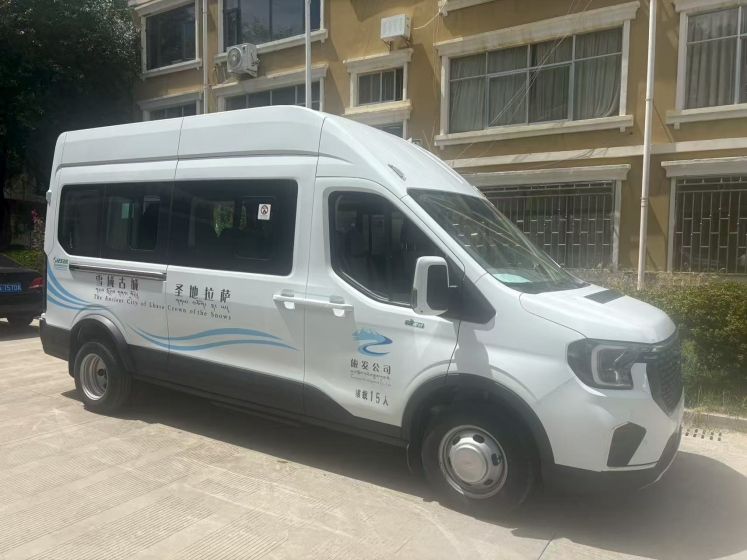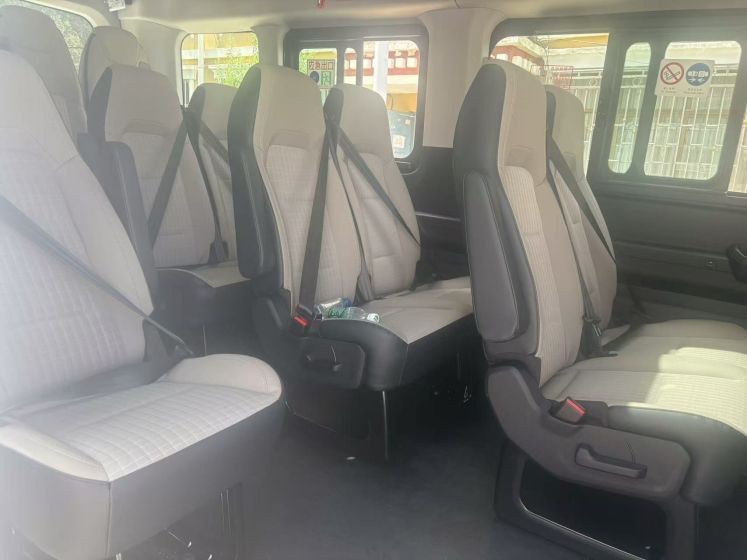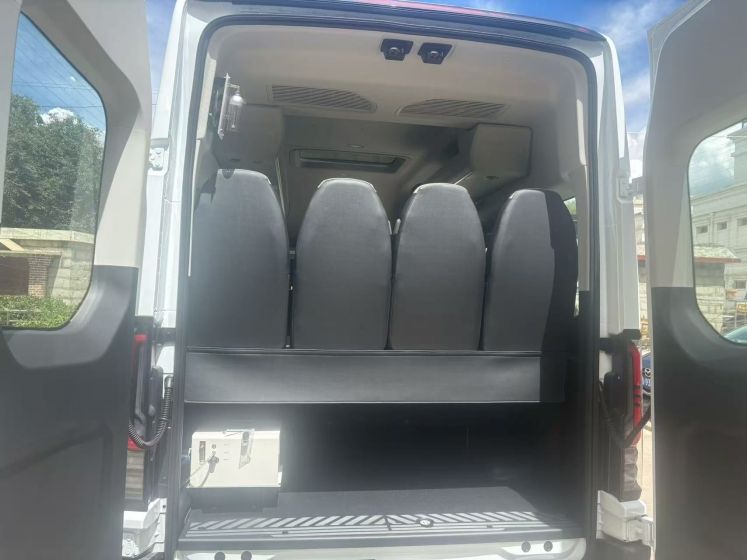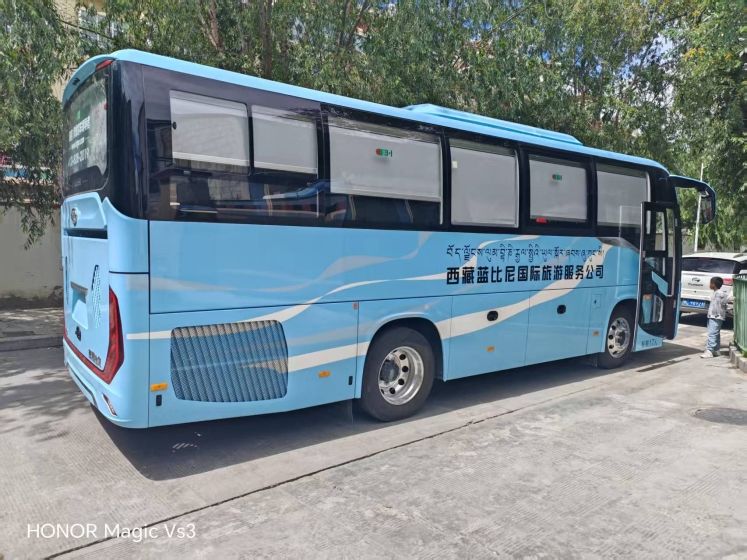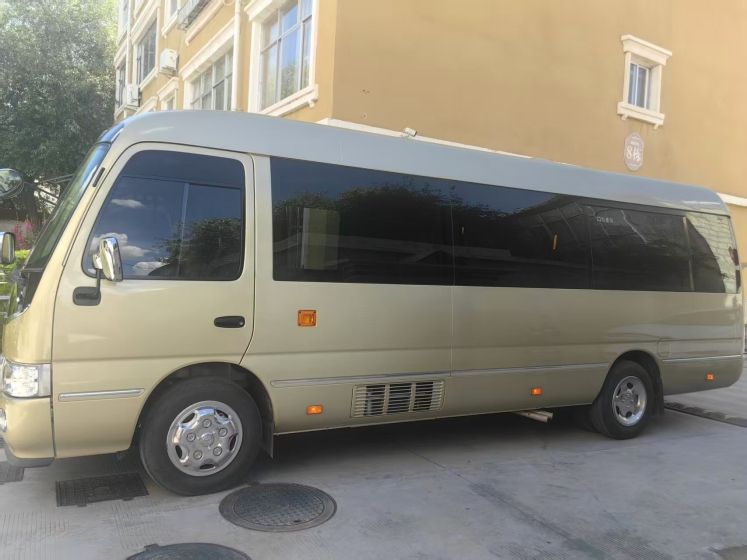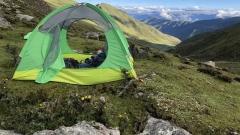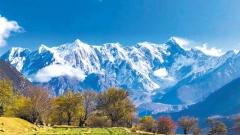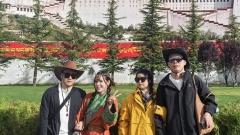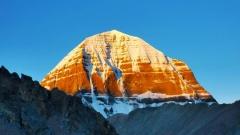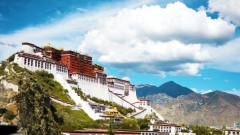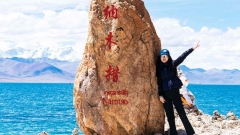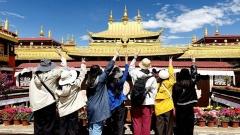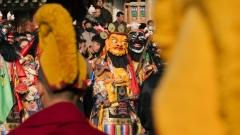Traveling across Tibet is as much about the journey as the destination. The road between Lhasa’s ancient streets, the turquoise shores of Yamdrok and Namtso, and the stark grandeur of Everest Base Camp carves memories that last a lifetime — but those memories are shaped by the vehicle that carries you. This guide explains, in practical detail, the types of vehicles typically used on Tibet tours, who each vehicle is best for, safety and comfort considerations, and how to pick the right ride for your itinerary and group.
WHY YOUR VEHICLE CHOICE MATTERS AT TIBET?
Tibet’s roads vary from smooth highway to gravel mountain pass. Choosing the right vehicle affects safety on steep passes and sharp turns, comfort during long drives at altitude, and the ability to reach remote attractions. Properly equipped vehicles (oxygen supplies, sturdy suspension, reliable 4WD systems) reduce discomfort, lower altitude-related risk, and allow you to explore off-the-beaten-path areas.
Whether you travel solo, as a couple, a family, or a larger group will determine the ideal vehicle. Smaller SUVs give intimacy and flexibility; larger minibuses and coaches work best for groups and for sharing costs.
TYPES OF VEHICLES USED IN TIBET TOURS
Below are the most common vehicle categories used by quality tour operators in Tibet, with practical notes about capacity, typical brands, strengths, and suggested uses.
5-SEATER SUVs: 2-3 Travelers
Small, rugged, and nimble, 5-seater SUVs are favored by couples or up to three travelers who want flexibility and comfort.
COMMON BRANDS & FEATURES:
- Toyota Prado — modern, comfortable, reliable; roomy cabin and strong off-road ability. Ideal for 1–3 travelers seeking a smooth, stable ride.
- Toyota Land Cruiser 200 — the premium choice for those who want maximum off-road capability and luxury. Excellent for steep passes, rocky tracks, river crossings.
- Mitsubishi Pajero — a durable 4×4 with dependable off-road performance and a comfortable interior.
WHY CHOOSE A 5-SEATER?
- Best for travelers who prioritize comfort and the ability to take remote roads other vehicles can’t handle.
- Smaller footprint on narrow mountain roads makes them good for winding routes.
- Operators often equip these SUVs with large bottles of oxygen and bottled water — essential comforts at altitude.
RECOMMENDED USES
- Private Lhasa excursions, short overland legs, and tailored multi-day itineraries where flexibility and access are priorities.
7-SEATER MINIVANS: 2-4 Travelers
7-seater minivans are an excellent middle ground: more room than an SUV but still compact enough for flexible routing.
COMMON BRANDS & FEATURES
- Buick Business Minivan, Ford Quanshun Minivan, Hyundai Minivan — comfortable seating in three rows, good trunk space, smooth ride quality.
WHY CHOOSE A 7-SEATER?
- Ideal for small families or groups of 2–4 who want extra luggage space and greater interior comfort.
- Minivans often provide better legroom and trunk capacity than SUVs while still fitting into tighter roads where full-size coaches cannot go.
- Operators commonly limit passengers slightly below maximum capacity so luggage can be safely stored.
RECOMMENDED USES
- Airport transfers, short-to-medium distance transfers between towns, family trips where a private guide or driver is part of the experience.
9-SEATER PEOPLE-CARRIERS: 5-6 Travelers
9-seater vehicles combine generous window views and storage with high-altitude capability.
COMMON BRANDS & FEATURES
- Yutong Tianjun, larger Hyundai minivan variants — designed for high-altitude travel with robust chassis and powerful powertrains. Roomy interiors, adjustable seats, rear luggage compartments.
WHY CHOOSE A 9-SEATER?
- Great for groups of 5–6 who want more space and panoramic viewing for photography.
- Built to handle mountain roads confidently while keeping passengers comfortable during long legs.
RECOMMENDED USES
- Photography trips, small tour groups, multi-day excursions where a guide and driver are required but coach travel is unnecessary.
15-SEATER VANS: 6-10 Travelers
15-seater Transit-style vans offer a comfortable, adaptable option for groups that want togetherness without the scale of a full coach.
COMMON BRANDS & FEATURES
- Ford Transit or Quanshun versions — high-chassis for a smoother ride, adjustable seating, and durable construction for high-altitude touring.
WHY CHOOSE A 15-SEATER?
- Good for groups of roughly 6–10 where some seats may be left free to store luggage. The high roof and sturdy build make these vans well suited to Tibet’s long, varied journeys.
RECOMMENDED USES
- Family reunions, small tour groups, companies traveling together, or any trip where passenger comfort and moderate luggage capacity are both required.
17-SEATER MINI BUSES: 9-13 Travelers
17-seater minibuses strike a balance between passenger capacity and comfort. They are a common choice for larger families or tour groups.
COMMON BRANDS & FEATURES
- Hyundai County Mini Bus — powerful engines, advanced suspension, and an interior layout designed to maximize passenger comfort and window viewing.
WHY CHOOSE A 17-SEATER?
- Perfect for groups of 9–13. The design allows for longer journeys with reasonable luggage capacity and comfortable seating.
- Built for stability on mountain roads and ease of boarding/disembarking at scenic stops.
RECOMMENDED USES
- Multi-day sightseeing tours, group transfers between Lhasa and regional attractions, or transfers from rail/air hubs.
23-SEATER BUSES: 13-18 Travelers
When traveling with 13–18 people, a 23-seater coach offers stability, large luggage compartments, and the ability to move a whole group together.
COMMON BRANDS & FEATURES
- Yutong 23-seater tourist coach, Jinlong or Jinlv models — wide windows for viewing, separate luggage trunks, robust engines to handle high passes.
WHY CHOOSE A 23-SEATER?
- Economical for larger groups while still offering comfort and viewing opportunities.
- A single coach simplifies logistics, keeps the group together, and provides large dedicated luggage space.
RECOMMENDED USES
- School groups, corporate retreats, or extended excursions with many stops where keeping the group together is advantageous.
HOW TO CHOOSE THE RIGHT VEHICLE FOR YOUR TRIP
MATCH VEHICLE TO GROUP SIZE AND LUGGAGE NEEDS
- Solo or couple → 5-seater SUV for flexibility.
- Families or 3–4 people → 7-seater for balance of comfort and storage.
- Small groups (5–8) → 9– or 15-seater depending on luggage.
- Larger groups (9–18) → 17- or 23-seater minibus/coach.
CONSIDER ITINERARY DIFFICULTY
- Remote dirt tracks and high passes → choose a 4×4 SUV or rugged 9-seater with high clearance.
- Mostly highway or well-maintained roads → 15–23 seat coaches provide comfort and panoramic viewing.
THINK ABOUT LUGGAGE & EQUIPMENT
- Photographers and campers need extra trunk space. Many operators intentionally seat fewer passengers than capacity to allow room for bags and equipment.
THE IMPORTANCE OF DRIVER EXPERIENCE
- In Tibet, driver skill is as important as vehicle capability. Choose operators with experienced drivers who know local roads, acclimatization pacing, and emergency procedures.
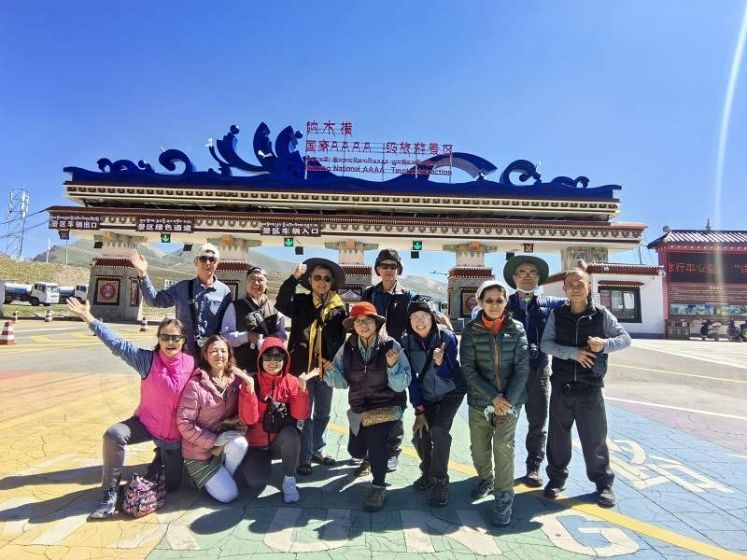
SAFETY & PREPARATION FOR VEHICLE-BASED TIBET TOURS
OXYGEN, HYDRATION, AND ALTITUDE AWARENESS
- Many tour vehicles are stocked with large oxygen cylinders and bottled water. Carry your own small oxygen canister if you have previous altitude sensitivity.
- Plan itineraries with gradual altitude gains and rest days to reduce risk of acute mountain sickness.
VEHICLE MAINTENANCE AND CLEANLINESS
- Confirm vehicles are well-maintained, with recent service records and modern tires suitable for mountain terrain.
- Newer vehicles (within 1–2 years) reduce the risk of breakdowns; many reputable operators keep fleets young for reliability.
SAFETY EQUIPMENT
- First aid kits, seat belts for all passengers, fire extinguishers, and satellite or mobile communication (where coverage exists) are essential.
- Inquire whether drivers carry spare tires, basic repair tools, and emergency blankets.
LUGGAGE HANDLING AND STORAGE
- For vans without separate trunks, tour operators typically reserve a few seats or a rear cargo area to store suitcases safely. Confirm luggage limits in advance.
INSURANCE, PERMITS, AND LEGALITIES
- Ensure your travel insurance covers high-altitude travel and overland journeys. Some Tibetan regions require permits to visit; a responsible operator will secure all necessary paperwork on your behalf.
PRACTICAL TIPS FOR A BETTER VEHICLE-BASED TIBET EXPERIENCE
PACK SMART FOR LONG DRIVES
- Layers for temperature swings, sunscreen, sunglasses, motion-sickness remedies, and a small personal oxygen spray can make a big difference.
- Noise-cancelling earphones or music playlists and neck pillows improve comfort on long legs.
SEAT SELECTION STRATEGY
- Front seats provide the least motion sickness for many travelers. Middle-row window seats are best for views and photos. If you’re prone to altitude sickness, sit closer to the front and near windows for fresh air.
COMMUNICATE SPECIAL NEEDS EARLY
- If you have medical conditions, dietary needs, or mobility challenges, inform your operator when booking. Many vehicles can be adapted or seating plans rearranged to accommodate needs.
PHOTOGRAPHY & WINDOW USE
- Vehicles with larger windows (minivans and coaches) give the best panoramic views for photography. Bring a lightweight tripod or monopod and keep gear secure during travel.
FINAL CHECKLIST BEFORE YOU BOOK
- Confirm vehicle make/model, age (newer is generally better), and capacity.
- Verify the number of oxygen cylinders, bottled water, and first-aid kits on board.
- Ask about luggage capacity and whether seats will be left vacant for bags.
- Confirm driver credentials and experience on Tibetan routes.
- Make sure travel permits (e.g., Tibet Travel Permit) and insurance are handled.
- Request a sample daily driving time for your itinerary to avoid excessive single-day mileage.
YOUR TIBET TOUR VEHICLE SHAPES THE TRIP
Tibet tour Vehicle determines how comfortably you take in Himalayan vistas, how safely you traverse high passes, and how smoothly your group functions from one sacred site to the next.
If you’d like help matching an exact vehicle to a specific Tibet itinerary — from a private Lhasa loop to an Everest Base Camp overland excursion — China Dragon Travel can arrange properly equipped vehicles, experienced local drivers, and full permit support to make your visit safe, comfortable and unforgettable.



